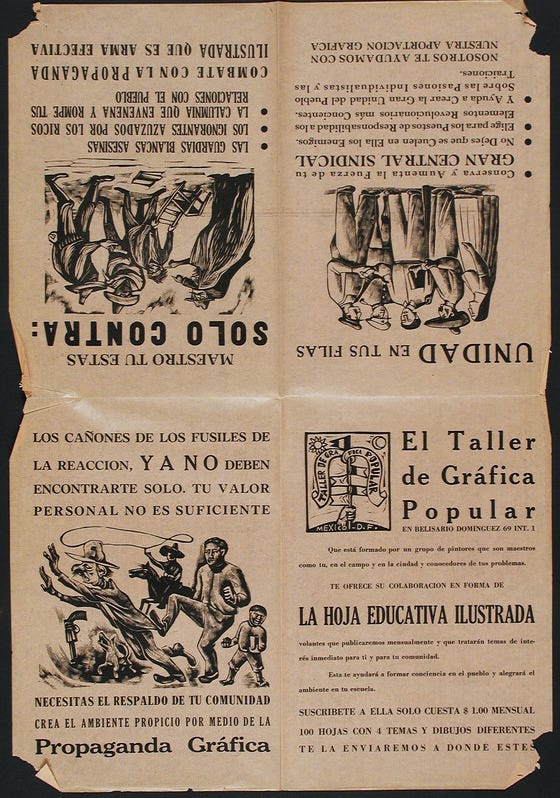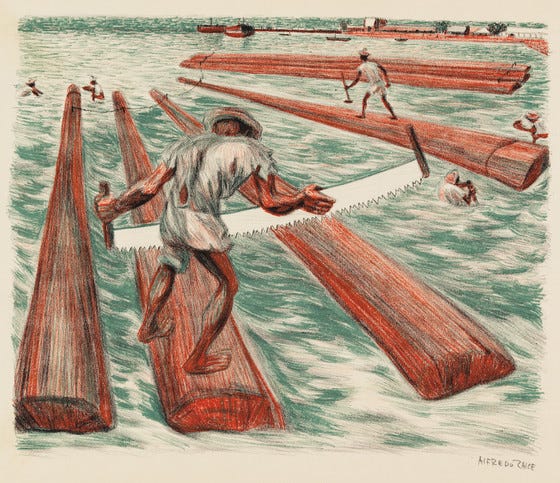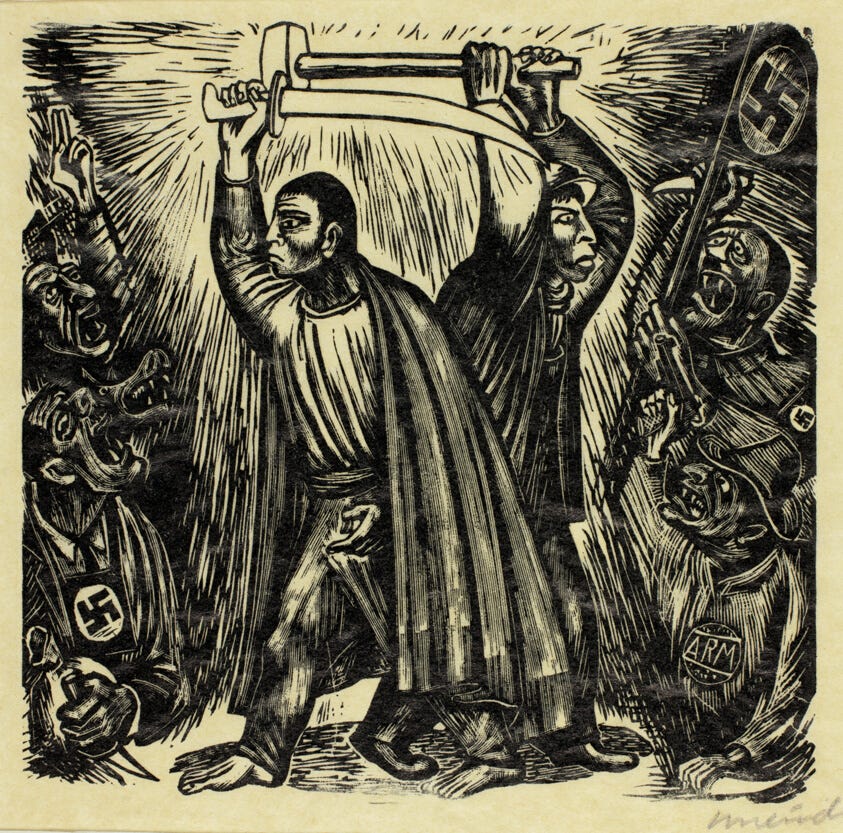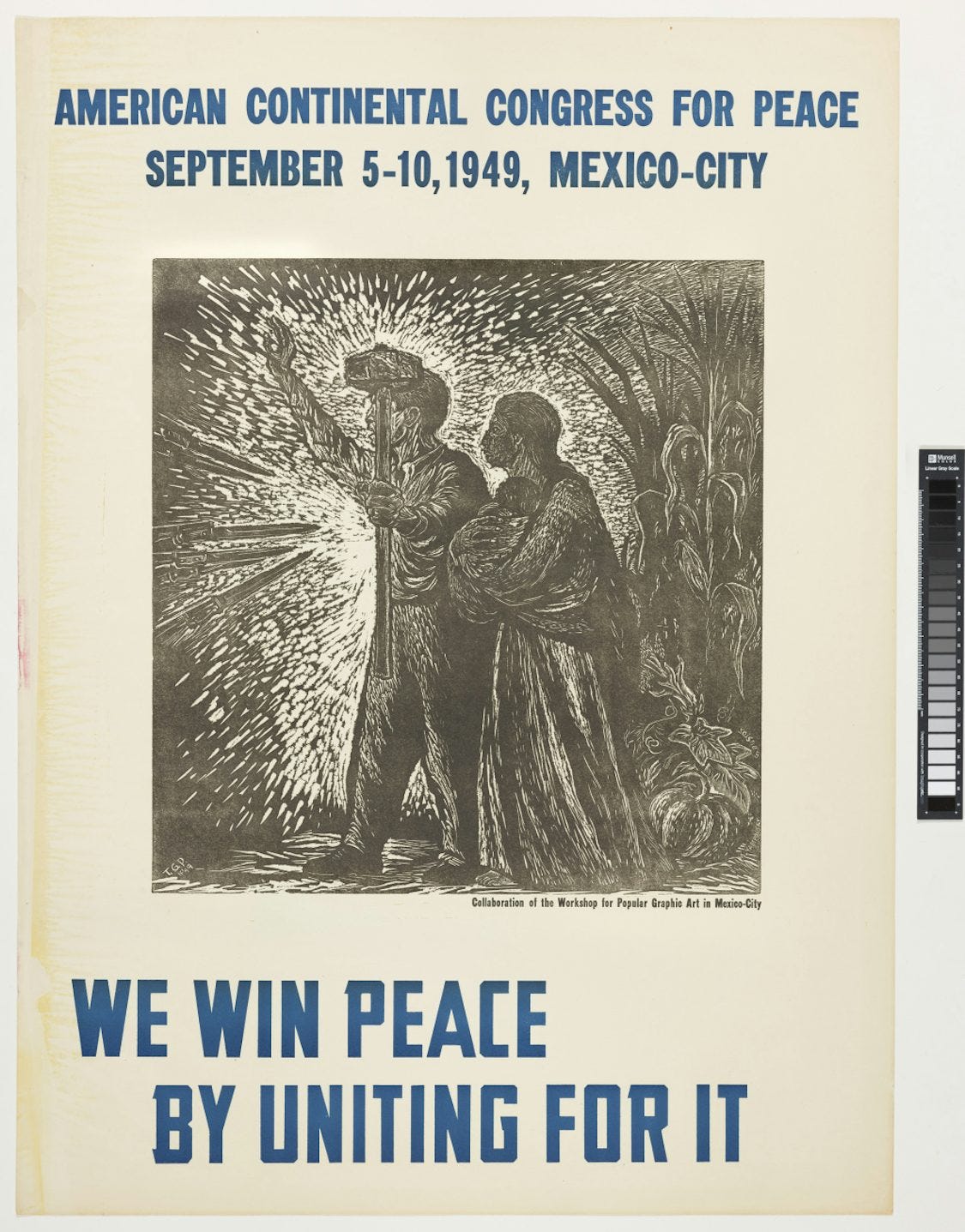Resources for Wildfire Recovery are linked here, as I ran out of room to list it out in this issue.
Illustration
I impulsively bought this beautiful little tree at Trader Joe’s and it sits perfectly in this is odd transitional space in my home. Recently, it was the subject of an assignment for my drawing class where we had to draw all the negative space around a houseplant. I instantly thought to draw this plant with ink.
Inspiration
I was in San Diego recently for work and had my first chance to visit the San Diego Museum of Art in Balboa Park. Lots of work stood out to me, but there was one exhibit on portraiture that featured a portrait by Wayne Thiebaud of his daughter that I hadn’t seen before. I’m only familiar with his works depicting sweet treats, desserts, and confectionary that comment on fetish and materialism. Still, I liked how he applied this sweet treatment to the round powder puff box and the orange shadow on the peach-colored surface, perhaps a vanity table. His daughter appears statuesque, and I appreciate the touches of blue on her skin that mimic the shade of her top and the shine of her hair. Maybe those dessert works are more of a critique of the misplacement of our affections on objects rather than an indictment of the loving gaze, which is well-calibrated when set on our loved ones.
The other exhibit I wanted to highlight was one on printmaking in Mexico that focuses on the work of the Taller de Gráfica Popular (TGP). The Taller de Gráfica Popular (TGP) has been called the “most influential and enduring progressive printmaking collective of its time.”

The collective was based in Mexico City and was founded in 1937 primarily by artists Leopoldo Méndez, Luis Arevolution's O’Higgins against the backdrop of the post-revolutionary period, one of social unrest and political turmoil. The 1910 revolution to overthrow dictator Porfirio Diaz was a success. Still, the revolutionary political parties that institutionalized the revolution's aims (PRI, PRM, PNR) failed to deliver on the democratic post-revolution vision held by many leftist Mexicans. Socialism and communism spread worldwide via direct political organizing and collective art projects like the TGP. They acted as both a conduit for global political propaganda from the soviet bloc and a space for Mexico to create its own vision of communism.

At its core was the guiding principle that “in order to serve the people, art must reflect the social reality of the times.” The TGP keenly understood that art could be a tool for social change.

Their art was about, for, and oftentimes created by workers and farmers. Many of the pieces produced by the TGP concerned and addressed the exploitation of workers and farmers by depicting the physical and mental toil of their tireless work at factories and in the fields, the strain and difficulty of this intense manual labor, and the faceless, inhuman mechanical nature of the work and thanklessness of their toil. Although similar to socialist realism from other countries, TGP art didn’t glorify the exploitation of workers nor depict them as an essential contributor to national modernity, but instead focused on the Mexican economy’s continued reliance on colonial industries and racial hierarchy.

In these artistic depictions, workers often took on the exact characteristics of the resources and materials around them, sometimes by use of the same colors or similar brushwork. In both Construction Workers and Lumbar Workers, you will notice how we never see their faces, their gazes turned away from us and toward the difficult work ahead of them. And yet, even though they are faceless, it is hard not to empathize with their struggle.

Much of the TGP’s work also addressed oppression, imperialism, and fascism at home and abroad.

Printmaking is a democratic and accessible art form— a way to reach many people for little money. The collective was open to all, and anyone could access materials and learn the various techniques used in the collective, such as lithography, woodcut, and linocut. Education was at the heart of the TGP. Artists, farmers, workers, and everyday could learn new processes and new ideas. And these pieces could be produced in large quantities and distributed quickly and widely. The TGP had a lot of the promise of the early internet: voices for all, low barriers to the means of production and a pro-democracy bend.

Related Readings
The Taller de Gráfica Popular: Collectivity, Popular Prints and Transient Muralism
In this video, artist Adolfo Mexiac describes what being part of the TGP was like, and the collaboration process between the artists, farmers, and workers who would request banners and posters.
Ideas
I work in grassroots political advocacy, specifically in political communications and rapid response, and I am overwhelmed by the news. Chances are, you are, too. This constant chaos is by design of the Trump administration, not only in the news volume, but also in the emotional heaviness of the content. It’s scary, yes, overwhelming and exhausting, and yet, it’s no time to detach and turn away from it. It’s time to adapt, adjust, and remember that humanity has faced existential threats before, survived, and even thrived. It’s critical to keep speaking up and voicing dissent. Dannagal Young, a professor of communication at the University of Delaware says, “News consumption is not an end in itself. From a democratic theory standpoint, news consumption is a means to become informed to act.” Instead of getting overwhelmed by the news, take action in your community, call your lawmakers and don’t isolate yourself.
Relatedly, much of this news fatigue comes from how social media has exploited our human nature and holds our attention captive unwillingly. “Attention isn’t a resource like coal or oil, which exist outside us; attention is what makes us human, Hayes maintains, and this particular stage of capitalism is fueled by a fracking of our minds…Instead of submitting to the endless scroll, Hayes now makes a point of sitting down with a print version of the newspaper. Carr, for his part, extols a ‘more material and less virtual existence.’ I think they’re both right, even if trying to change one’s own behavior feels small next to the structural forces delineated in their books. But for now, yes — it’s going to take willful acts of sensory deprivation for us to come to our senses.”
And I don’t think it’s a coincidence that there is a trend towards the non-digital and longing for objects we can hold in our hands and possess. I’m taking a drawing class, and on our first day, we did ice breakers, and a handful of people, including myself, talked about how we work on a computer all day, staring at screens for 8 hours, and how we were looking forward to working with our hands and with paper and pencils and ink. A substack I like covered this trend back towards “physical media.”
Ending Quote
I’ll end with this from quote from artist Leopoldo Méndez, one of the founders of the TGP. As a teenager Méndez was a member of the Stridentist movement, an avant-garde Mexican literary and artistic group in the 1920s. It’s clear to see how his experience in this movement shaped the founding of the TGP and the philosophy to create art for the people.
“The urgency of expressing the feelings of a free people, to put their spiritual yearnings at the service of the Revolution, made the painters abandon the concept of art for art’s sake, though that at least required or permitted artistic work to be refined until perfected, in exchange for a momentary work, without careful outlines, but in the end this has created a new aesthetic, one of protest, full of popular longings, and that lives in the full multitude of rebellion, is strong and great and captures us with the emotion of battle — this is life.”






